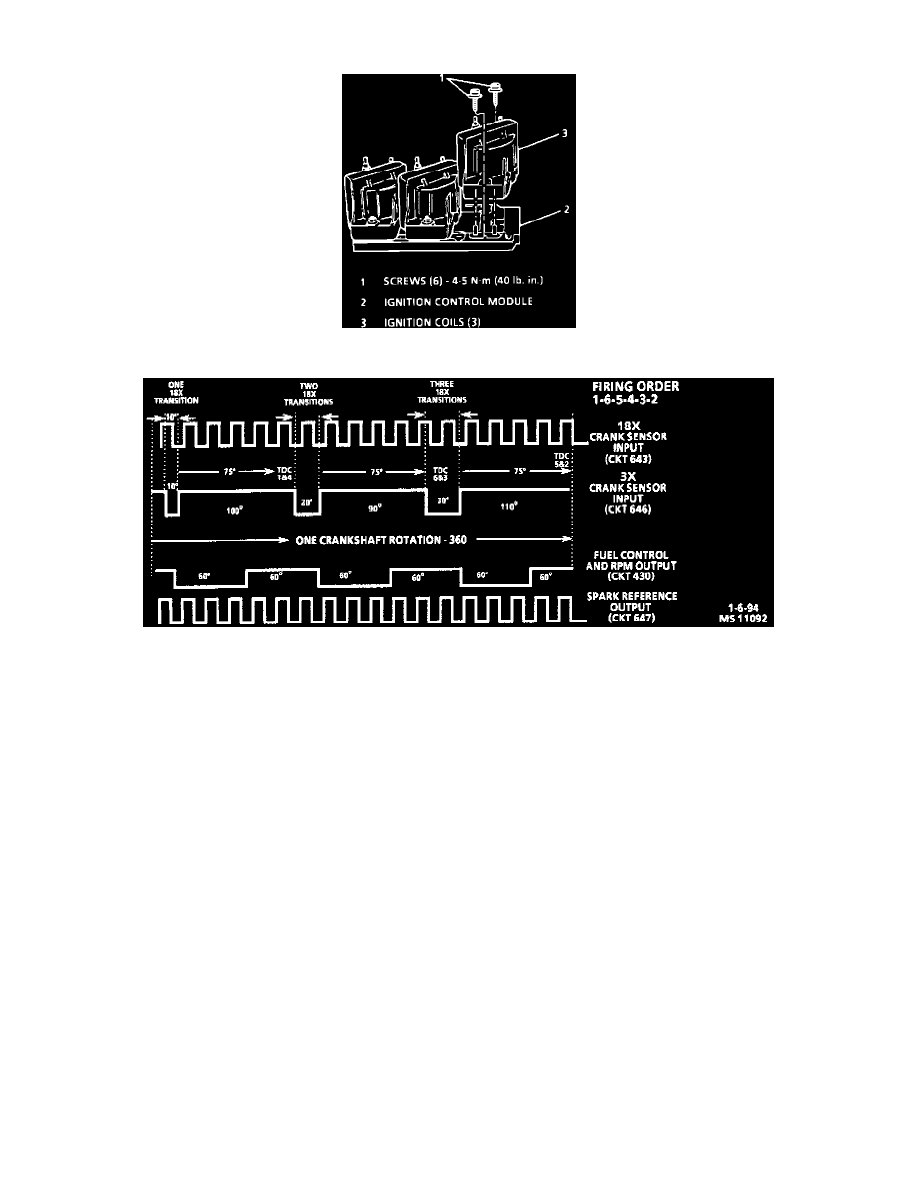Riviera V6-3.8L SC VIN 1 (1995)

Ignition Control Module: Description and Operation
Ignition Coils And Ignition Control Module
Crankshaft Pulses
DESCRIPTION
The electronic ignition module performs several functions:
-
It powers the dual crankshaft position sensor internal circuits.
-
It supplies the voltage signals that each respective Hall-effect switch pulses to ground to generate the 3X and 18X crankshaft position sensor
pulses.
-
It determines the correct ignition coil firing sequence, based on how many 18X transitions occur during a 3X pulse. This coil sequencing occurs at
start-up. After the engine is running, the module remembers the sequence, and continues triggering the ignition coils in proper sequence.
-
It determines whether or not the crankshaft is rotating in the proper direction, and cuts off fuel delivery and spark to prevent backfiring if reverse
rotation is detected.
-
It sends a "crankshaft reference" (fuel control) signal to the PCM. The PCM determines engine RPM from this signal. It is also used by the PCM
to determine crankshaft position for Ignition Control (IC) spark advance calculations. (The falling edge of each fuel control signal pulse occurs
700 before TDC of any cylinder.)
OPERATION
The fuel control signal sent to the PCM by the electronic ignition module is an "ON-OFF" pulse occurring 3 times per crankshaft revolution. This
is neither the 3X nor the 18X crank sensor pulse, but both of these are required before the electronic ignition module will generate the fuel control
signal.
The electronic ignition module generates the fuel control signal by an internal "divide- by- 6" circuit. This divider circuit divides the 18X
crankshaft position sensor pulses by 6. The divider circuit is enabled, or ready to begin dividing, only after it receives a 3X crankshaft position
sensor pulse. After beginning, the divider circuit does not need the 3X pulses to continue operating. If either the 18X OR 3X pulses are missing at
start-up, the divider will not generate a fuel control signal pulses (sent to the PCM), and no fuel injector pulses will occur.
-
Anytime the PCM does not apply 5 volts to the electronic ignition module "bypass" circuit, the electronic ignition module controls ignition by
triggering each of the three coils in the proper sequence at a pre-determined dwell, with spark advance fixed at 10 degrees BTDC. This is called
module mode ignition. The electronic ignition module provides proper ignition coil sequencing during both the module and IC modes.
